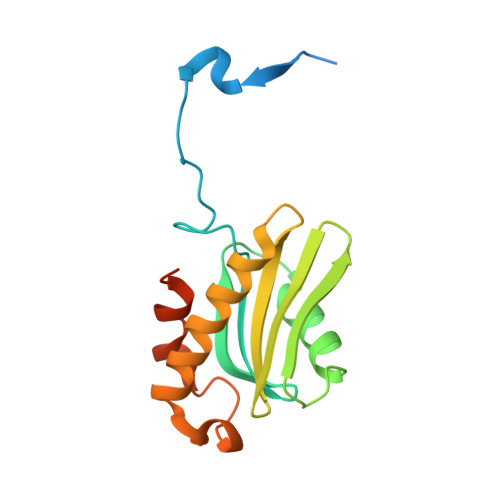Molecular Basis for the Sorting of the Snare Vamp7 Into Endocytic Clathrin-Coated Vesicles by the Arfgap Hrb.
Pryor, P.R., Jackson, L., Gray, S.R., Edeling, M.A., Thompson, A., Sanderson, C.M., Evans, P.R., Owen, D.J., Luzio, J.P.(2008) Cell 134: 817
- PubMed: 18775314
- DOI: https://doi.org/10.1016/j.cell.2008.07.023
- Primary Citation of Related Structures:
2VX8 - PubMed Abstract:
SNAREs provide the specificity and energy for the fusion of vesicles with their target membrane, but how they are sorted into the appropriate vesicles on post-Golgi trafficking pathways is largely unknown. We demonstrate that the clathrin-mediated endocytosis of the SNARE VAMP7 is directly mediated by Hrb, a clathrin adaptor and ArfGAP. Hrb wraps 20 residues of its unstructured C-terminal tail around the folded VAMP7 longin domain, demonstrating that unstructured regions of clathrin adaptors can select cargo. Disrupting this interaction by mutation of the VAMP7 longin domain or depletion of Hrb causes VAMP7 to accumulate on the cell's surface. However, the SNARE helix of VAMP7 binds back onto its longin domain, outcompeting Hrb for binding to the same groove and suggesting that Hrb-mediated endocytosis of VAMP7 occurs only when VAMP7 is incorporated into a cis-SNARE complex. These results elucidate the mechanism of retrieval of a postfusion SNARE complex in clathrin-coated vesicles.
- Cambridge Institute for Medical Research and Department of Clinical Biochemistry, University of Cambridge, Addenbrooke's Hospital, Hills Road, Cambridge CB2 0XY, UK.
Organizational Affiliation:

















